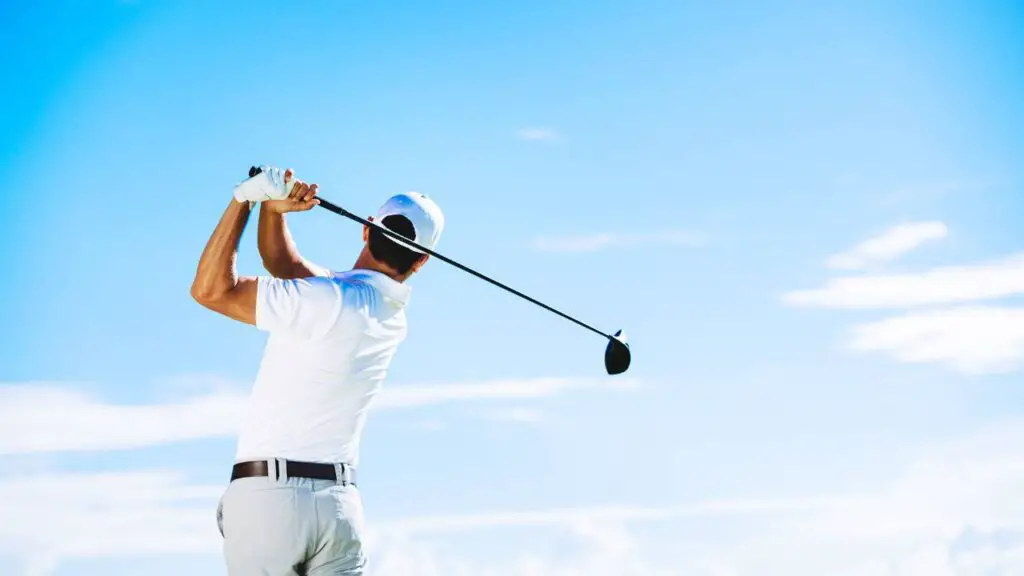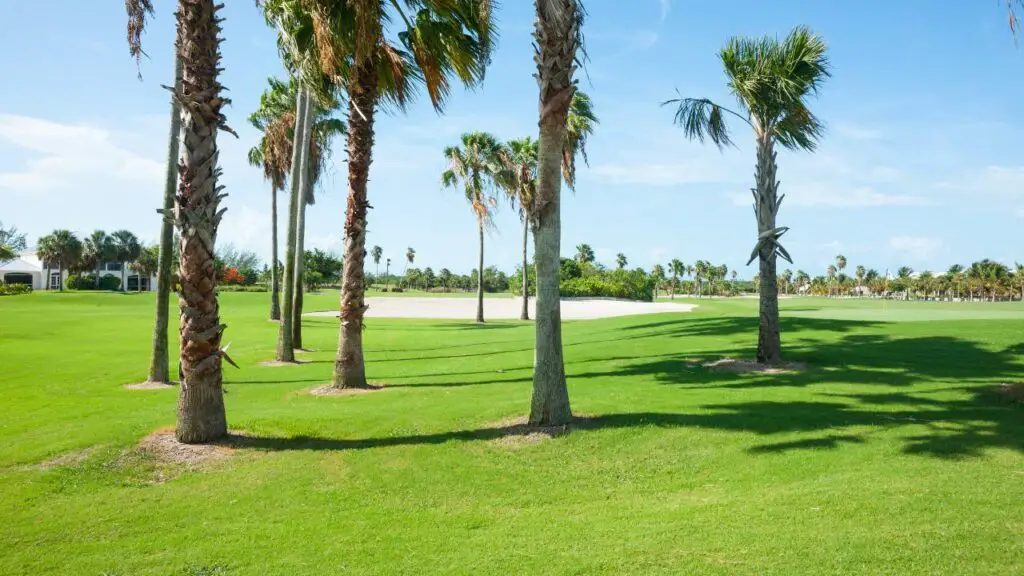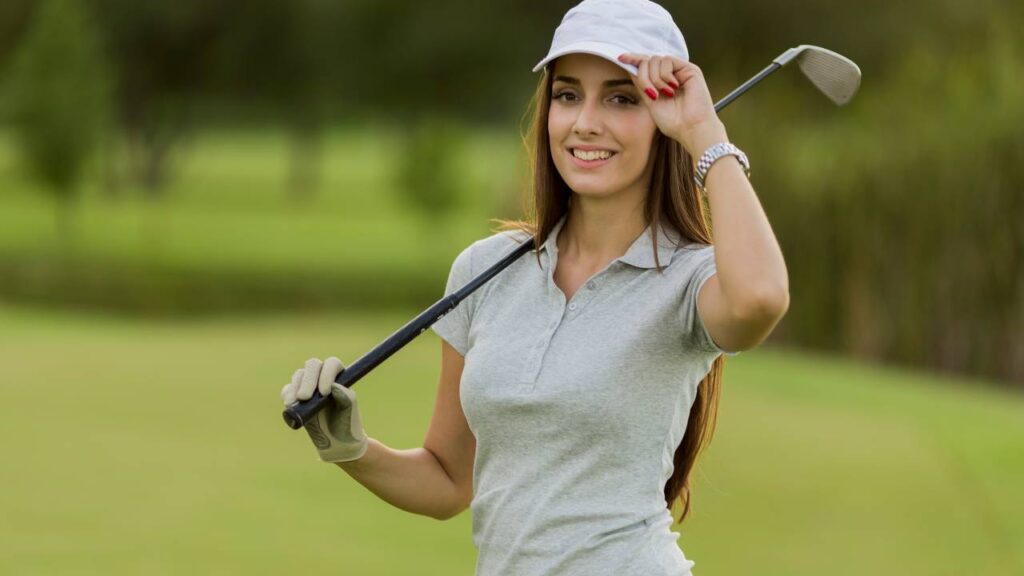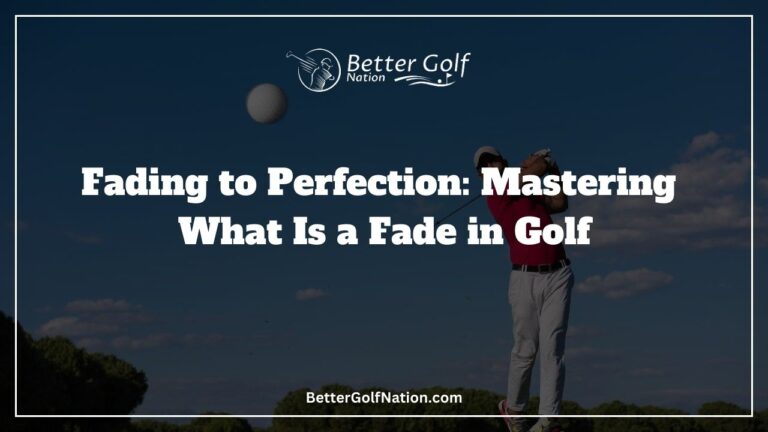What Is Casting in Golf? Discover How to Overcome It Today!
Casting in golf is an early wrist release during the downswing, draining stored power prematurely and compromising accuracy. It’s a prevalent swing fault that, unlike ‘over the top,’ can impede your progress. Addressing this issue requires understanding its mechanics, performing exercises, and utilizing appropriate training tools to refine your technique.

Key Takeaways
- Casting in golf is a common fault where players release their wrists too early during the downswing, resulting in a loss of power and accuracy.
- It can be caused by a golfer’s improper weight shift or losing control of their wrist position during the swing.
- Casting affects clubhead speed and the angle of attack, leading to shorter shots, less accuracy, and potential issues with clubface control.
- Differentiating casting from over-the-top is crucial, as they require distinct fixes. Proper swing mechanics, wrist position, and exercises can help correct casting faults.
- To prevent casting, practice slow-motion drills, hit into nets with towels under armpits, use swing trainers, and focus on proper wrist positioning for improved swing mechanics and consistent shots.
Introduction
You may have heard the term “casting” thrown around on the course or during a lesson. But what exactly is casting in golf?
Simply put, casting is a common fault that occurs in the golf swing when a player early releases their wrists on the downswing. This means that instead of maintaining lag and keeping their wrists cocked for as long as possible, they release too soon and lose power and accuracy.
Casting is one of many golf swing faults that can cause frustration on the course and hinder your improvement as a player. It’s important to understand what it is, why it happens, and how to fix it.
In this article, we’ll dive into all things casting, including its impact on your golf swing, how it differs from other faults like over the top, and exercises you can do to prevent it. Understanding casting is key to improving your golf swing mechanics.
When you cast the club early in your downswing, you essentially release all of your stored energy too soon. This results in a loss of power and accuracy because you are not generating enough clubhead speed at impact.
"Casting is one of many golf swing faults that can cause frustration on the course and hinder your improvement as a player. It's important to understand what it is, why it happens, and how to fix it."
Golf swing training tools like GPS watches or even indoor putting mats can be helpful for tracking progress toward overcoming casting in golf. It’s important to note that there is a difference between casting and other common faults, like over the top.
Over the top refers to an outside-in swing path where your club comes over the top of your hands during impact with the ball. Casting can sometimes be a result of an over-the-top move but isn’t always caused by one.
Properly identifying these differences will aid in correcting any issues with your technique. Now that we know what casting is let’s take a closer look at some problems associated with this fault, so you know just how crucial it is to correct any issues with early release techniques!
Check out this video below from Titleist‘s Youtube channel explaining why you’re casting the golf club:
What is Casting in Golf?
Casting is a term you might have heard in golf discussions before, but what does it mean? In simple terms, casting refers to releasing the club too early in the downswing. Instead of waiting for the club to naturally come down, golfers who cast tend to throw their wrists and arms at the ball, resulting in a loss of power and accuracy.
Casting is a common mistake among amateur golfers who are just starting out or trying to improve their swing technique. It often happens when a golfer shifts their weight too early or loses control of their wrist position during the swing.
The result is a premature release that leads to weak shots, slices, and hooks. To understand casting better, let’s look at what should happen during your golf swing technique.
As you start your downswing, the goal is to maintain control of your wrist position and keep your hands behind the ball prior to impact. This allows you to generate maximum power and maintain accuracy as you strike the ball with an inside-out path.
"In simple terms, casting refers to releasing the club too early in the downswing. Instead of waiting for the club to naturally come down, golfers who cast tend to throw their wrists and arms at the ball, resulting in a loss of power and accuracy."
When you cast instead of maintaining this position prior to impact, there are several negative effects on your swing characteristics:
- You not only lose power because you release too soon but also hit less accurate shots because throwing angle changes can cause off-center strikes or misalignments between target lines and the balls’ final spots marked with golf ball markers.
- If your wrist is not firm enough at impact due to casting techniques causing an early release or other issues such as improper use of GPS watches or starter golf clubs that do not match one’s skill level needs, this can lead players into more serious mistakes like over-the-top swings, which require correction via swing analysis training sessions with professionals who specialize in these areas.
Casting is one of many common mistakes made by amateur golfers while attempting their swings without proper training using proper equipment like golf trolleys or GPS watches, which may assist them. It occurs when they lose control over wrist position early in their downswing, which leads to a premature release and affects swing power and accuracy.
Correcting casting requires understanding the difference between proper and improper golf swing techniques, along with training and exercises that can help maintain control over wrist position. With practice and patience, all golfers can improve their swing technique, and avoid casting mistakes or other issues that affect their golf scorecards.
Enjoying this article? Read more:

The Impact of Casting on Your Golf Swing
Casting is a common error in golf swing mechanics that can be detrimental to your game. When you cast in your golf swing, you release the club too early before making contact with the ball.
This causes your hands to move outward away from your body, which results in a loss of power and accuracy. In turn, this means that your shots will not travel as far as they could have and may veer off course.
If you suffer from casting issues when playing golf, it can cause a number of problems with your swing and overall performance. Golf is all about precision – small errors in technique can have a big impact on shot accuracy and distance.
Casting usually results in missed shots and lost power on impacts, leading to poor scores even when you make good contact with the ball. is significant because it changes the throwing angle of the club head through impact by reducing lag pressure.
This decrease affects the amount of energy transferred into the ball at impact, directly impacting its trajectory and distance covered during flight. One way casting ruins proper golf swings is by causing an early release of energy within them, resulting in improper delivery speeds or even breaking down at points during their swings due to tension building up within their bodies.
Wedges are often used for most short-game approaches where control is key when being played onto greens at different angles or distances from pins, but casting ruins these tight control shots as well due to the unpredictability associated with them. Now that we know how important it is to fix casting problems, let’s see if we can find some solutions that will work for you so that you can correct this common error and improve your golfing skills!

Casting vs Over the Top: Understanding the Difference
Casting and over the top are two of the most commonly used terms in golf talk, but many people do not understand the difference between them. Both are swing mechanics that can cause problems with your golf swing, but they are quite different.
Casting refers to an improper swing technique where the golfer releases their hands too early in their downswing. This causes a loss of power and accuracy, as well as a lack of control over the club head. When you cast your club, you lose energy as you release it too early in your swing motion.
Over-the-top refers to an incorrect swing path where the club moves outside to inside on the downswing. This causes a steep angle of attack that leads to shots that slice or go right of your intended target line. Over-the-top is often caused by poor wrist position at impact or flipping the club.
While both casting and over-the-top can cause problems with your golf swing, they require different fixes. The proper swing mechanics for both require practice and proper instruction from a qualified golf pro. One way to fix casting is to work on maintaining proper wrist position throughout your entire golf swing motion.
"Casting and over the top are two of the most commonly used terms in golf talk, but many people do not understand the difference between them. Both are swing mechanics that can cause problems with your golf swing, but they are quite different."
Doing so will ensure that you compress the ball properly and deliver maximum power at impact. Practicing with golf nets or hitting practice greens can also help you improve your timing and avoid casting.
In contrast, fixing an over-the-top swing requires working on proper golf fitness and developing muscle memory for a more appropriate downswing path. Beginner golf sets often include clubs with flatter lie angles, which make it harder for players to suffer from an over-the-top move when they learn how to use them properly.
Understanding the difference between casting and over-the-top is essential for anyone looking to improve their golf game, whether playing pull carts or using rangefinders out on the course. By understanding these terms and working on improving your proper swing mechanics, you can avoid common mistakes and enjoy a more consistent and successful golf game.
Check out this video below from Russell Heritage‘s Youtube channel showing tips on how to stop casting the golf club forever:
Problems Associated with Casting
Having understood the concept of casting in golf and its impact on the swing, let’s delve into the specific issues associated with this common fault. Casting can lead to various problems that affect shot distance, accuracy, and control over the clubface.
Issues associated with casting:
- Early Release: Casting causes golfers to release their wrists prematurely during the downswing, resulting in a loss of power and reduced utilization of generated swing energy.
- Shorter Shots and Inaccuracy: Due to the early release, shots may lack the necessary power and accuracy, leading to shorter distances and missed targets.
- Loss of Clubface Control: Casting can make it challenging to maintain control over the clubface, causing shots to veer off course and not go where intended.
- Shallow Swing: The casting motion brings the hands closer to the ball before impact, creating a shallow angle of attack that skims the surface rather than making solid contact.
- Impact on Clubhead Speed: Releasing too early slows down the clubhead, diminishing swing speed and reducing the distance the ball travels compared to maintaining proper wrist angle.
- Unnatural Swing Appearance: Casting can make the golf swing look awkward and less fluid, affecting the overall aesthetics of the player’s technique.
Drills and exercises to address casting problems:
- Slow-Motion Drill: Practicing the swing in slow motion, focusing on maintaining proper wrist position before impact.
- Towel Drill: Hitting balls with a towel under the armpits helps keep the arms closer to the body, promoting a more consistent swing.
- Swing Trainers and Aids: Utilizing golf swing trainers like the Orange Whip or Sklz Gold flex can improve synchronization between body movements and clubhead direction.
- Work with a Golf Coach: Seeking guidance from a golf coach or participating in online discussions can provide valuable tips and insights to correct casting issues and enhance overall swing mechanics.
In conclusion, addressing casting problems is essential for improving golf performance. By understanding and tackling the issues associated with casting, golfers can enhance their technique, achieve greater accuracy and distance, and ultimately elevate their game.

How to Fix Casting in Golf
To address casting in golf, players can take several steps to improve their swing mechanics and overcome this common fault:
- Golf Swing Instruction: Seek professional golf swing instruction to learn proper technique, which can greatly reduce casting faults and improve overall swing mechanics.
- Practice with Indoor Putting Mats and Driving Ranges: Invest time in practicing with indoor putting mats or at driving ranges where swing instruction is available, providing a controlled environment to work on correcting casting issues.
- Maintain Proper Wrist Position: Focus on keeping your wrists firm throughout the swing to prevent early release, which leads to loss of power and accuracy.
- Emphasize Lag Over Casting: Concentrate on generating lag rather than casting during the downswing, allowing for increased power and precision upon impact.
- Distinguish Between Casting and Lag: Understand the difference between casting (early wrist release) and lag (maintaining hands in front of the clubhead), enabling targeted corrections for each issue.
- Specific Drills and Exercises: Engage in drills like practicing half swings while maintaining wrist position to develop muscle memory for proper technique. Additionally, hitting balls with one hand on the club can promote better wrist movement.
- Persistence and Dedication: Overcoming casting takes time and dedication to consistently practice and apply proper swing mechanics.
By focusing on these techniques and exercises, golfers can rectify casting faults, enhance their swing mechanics, and ultimately elevate their overall golf game. With dedication and practice, improvements are achievable, leading to greater power, accuracy, and control on the course.

Exercises and Drills to Prevent Casting
Preventing casting and enhancing your golf swing requires dedication, but the investment is worthwhile. Various exercises and drills can help prevent casting, leading to straighter and more consistent shots:
- Slow-Motion Drill: Perform the “slow-motion drill” by taking the club back slowly and stopping when parallel to the ground. Maintain wrist cocking for as long as possible before releasing prior to impact, allowing for better wrist positioning awareness.
- Net Drill with Towel: Hitting into a net with a towel under your armpits keeps arms closer to the body during the golf swing, minimizing excessive arm movement during rotation.
- Golf Swing Trainer: Utilize aids like the Orange Whip or Sklz Gold flex to improve timing and synchronization between body movements and clubhead direction, reducing casting tendencies during impact.
- Alignment Sticks or Clubs: When practicing at home or on the course with beginner golf sets, place alignment sticks or clubs parallel to each other in front of you while hitting balls off the tee. This encourages inside-out swings, discouraging over-the-top motions.
- Persistence and Patience: Correcting casting faults may take time and patience, but consistency in exercises and drills will significantly prevent and improve casting issues.
By incorporating these exercises and drills into your practice routine, you can enhance your wrist positioning, reduce casting tendencies, and foster more consistent shots with improved power and accuracy. The use of swing trainers and alignment aids will contribute to better swing mechanics, ultimately elevating your overall golf performance.

Conclusion
Casting is a common issue among golfers of all levels. In order to improve your swing and avoid casting, it’s important to focus on proper technique and form. This includes maintaining a correct wrist position, avoiding an early release, and ensuring a smooth swing through impact.
While correcting casting may not be easy, it is certainly achievable with practice and patience. Utilizing drills such as hitting nets or working with a swing instructor can help you better understand the mechanics of your swing and prevent casting from becoming a recurring issue.
Remember that casting is not the same thing as going over the top; understanding the difference between these two faults is key to properly diagnosing any issues in your swing. Additionally, don’t forget about golf fitness!
Improving your overall physical health can have a significant impact on your ability to execute proper technique during your golf swing. Don’t get discouraged if you find yourself struggling with casting in golf.
With dedication to training and practicing good technique fundamentals, you’ll soon see improvement in your game! And who knows? Maybe one day you’ll even be able to use those new skills with confidence while using your trusty stand bag or measuring distances with advanced golf rangefinders on the course!
FAQs
What is casting in the golf swing?
Casting in the golf swing refers to an early release of the wrists during the downswing, resulting in a loss of power and accuracy.
How do you stop casting in golf?
To stop casting, focus on maintaining proper wrist position and lag during the downswing. Practice drills like the slow-motion drill and use golf swing trainers for better synchronization.
What is "cast at the top" in golf?
“Cast at the top” refers to the premature release of the clubhead at the start of the downswing, leading to diminished clubhead speed and inconsistent shots.
How do I stop casting and coming over the top?
To prevent casting and coming over the top, work on proper swing mechanics, emphasize wrist control, and engage in drills that promote a better inside-out swing path.
How do I know if I'm casting the golf club?
Signs of casting include weak shots, a lack of distance, and loss of control. Video analysis and golf pro evaluation can help identify casting issues.
How do I stop casting in the swing?
Prevent casting by focusing on maintaining wrist angles, creating lag, and practicing with drills that encourage proper downswing sequencing.
How do you fix casting the club?
Fix casting by using swing aids, such as the Orange Whip, to promote better timing and synchronization between body and clubhead, resulting in more powerful and accurate shots.
How can proper wrist positioning prevent casting?
Maintaining firm wrists throughout the swing prevents early release, allowing for maximum power transfer and accuracy during impact.
What are common signs of casting faults in a golf swing?
Signs of casting faults include loss of power, inconsistent ball flight, and shots veering off target due to early release of the wrists.
How can using golf swing trainers aid in preventing casting faults?
Golf swing trainers promote proper sequencing and wrist control, helping golfers eliminate casting tendencies and improve overall swing mechanics.
Share this Post
Toni Benedito
Keep Reading
Follow Us
Recent Posts

How Do Pro Golfers Get Paid? The Business of Golf
Professional golfers get paid both before and after tournaments. Before a tournament, they receive appearance fees, sometimes exceeding $1 million, to attract top players. After the tournament, earnings depend on their placement, with the PGA

How Much Do Golf Players And Pros Make? You Won’t Believe It!
Professional golfers earn substantial incomes through tournament winnings, sponsorship deals, and endorsements. Top players on the PGA Tour can make millions annually, with significant earnings from prize money and lucrative brand partnerships. For example, Rory

The Shocking Cost: How Much Does It Cost to Fly with Golf Clubs?
Flying with golf clubs can be a hassle, but it’s worth it for avid golfers. Costs vary by airline, ranging from $30 to $150 per way. Southwest Airlines offers a generous policy, allowing one set

Why Do Golfers Tape Their Fingers Before Hitting the Course?
Golfers tape their fingers to prevent injuries from repetitive motions, provide support for existing injuries, and improve grip comfort. It’s a popular technique among amateurs and pros alike, offering a lightweight and effective solution compared

How Much Does a Round of Golf Cost? Are You on Par?
The cost of a round of golf varies widely based on factors like course type, location, and time of play. Public courses typically range from $30-$100 per round, while exclusive ones like Augusta National or

Hidden Fees: How Much Does It Cost To Rent a Golf Cart
Wondering how much it costs to rent a golf cart? Explore factors like location, rental duration, and cart type impacting prices. Daily rates range from $50 to $80, while weekly rentals can vary from $200
Table of Contents







